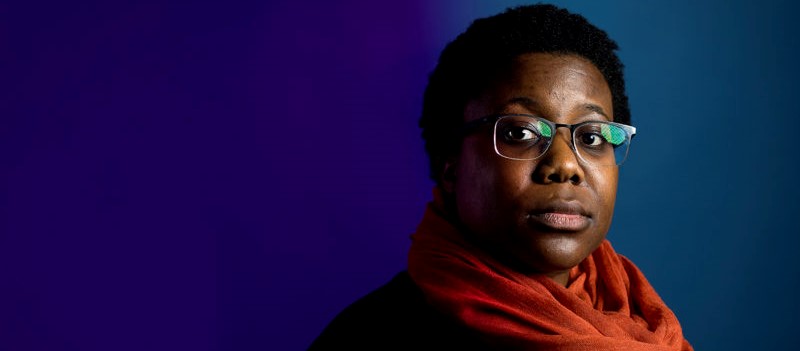
Source: Northeastern University / Northeastern University
When you’re a Black woman living in America, the forces working against you are stronger than those working against anyone else. Despite being the mothers of humanity Black women are often regarded at the bottom of the totem pole in terms of power and value in society. In Their Eyes Were Watching God, published in 1937, Zora Neale Hurston accurately and acutely described the Black woman’s place in society.
She wrote: “Honey, de white man is de ruler of everything as fur as Ah been able tuh find out. Maybe it’s some place way off in de ocean where de black man is in power, but we don’t know nothin’ but what we see. So de white man throw down de load and tell de nigger man tuh pick it up. He pick it up because he have to, but he don’t tote it. He hand it to his womenfolks. De nigger woman is de mule uh de world so fur as Ah can see.”
Following in that same tradition, Moya Bailey a queer author and activist coined the term misogynoir, in 2008, to address the specific anti-Black racist misogyny that Black women experience.” It wasn’t until 2010 when the term was written.
In a an essay published on Tumblr, Bailey described the origins of the term. She was speaking with a friend about the ways Black women were depicted in the media, harshly and with more vitriol than any other woman.
Bailey, began using the term on The Crunk Feminist Collective and the women in the digital community began using it as well. She used it on Tumblr and the term spread.
She wrote it was important to define exactly what misogynoir is because “What happens to Black women in public space isn’t about them being any woman of color. It is particular and has to do with the ways that anti-Blackness and misogyny combine to malign Black women in our world.”
She continued, “I was looking for precise language to describe why Renisha McBride would be shot in the face, or why the Onion would think it’s okay to talk about Quvenzhané the way they did, or the hypervisibilty of Black women on reality TV, the arrest of Shanesha Taylor, the incarceration of CeCe, Laverne and Lupita being left off the TIME list, the continued legal actions against Marissa Alexander, the twitter dragging of black women with hateful hashtags and supposedly funny instagram images as well as how Black women are talked about in music. All these things bring to mind misogynoir and not general misogyny directed at women of color more broadly.”
As with most things Black women create, people have tried to co-opt or refashion the term. But Bailey has literally written the book about it.
In addition to defining this global injustice, Bailey attended Spelman College, where she made a name for herself protesting against the appearance of rapper Nelly on campus for his depiction of Black women in his music, most infamously his song “Tip Drill.”
She is the co-author of #HashtagActivism: Networks of Race and Gender Justice and is assistant professor in the Department of Cultures, Societies, and Global Studies and the program in Women’s, Gender, and Sexuality Studies at Northeastern University.

